#pluto weaves webs
Text

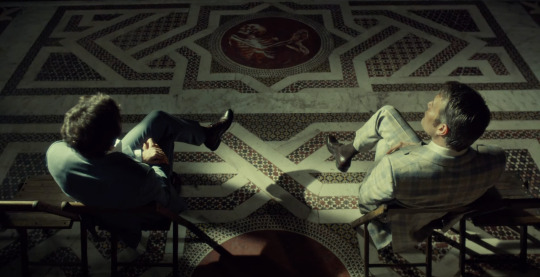


Claudia Durastanti, Strangers I Know / NBC’s Hannibal (2013-2015)
"Every crime of yours feels like one I am guilty of. Not just Abigail's murder, every murder stretching backward and forward in time. Freeing yourself from me and me freeing myself from you, they are the same. We're conjoined."
#pluto dont make every piece of media you consume about hannibal challenge failed#reading this book for my literary studies course#couldnt stop thinking abt these excerpts#pluto web weaves#nbc hannibal#hannibal lecter#hannibal#will graham#the wrath of the lamb#hannigram#hannibaledit#claudia durastanti#strangers i know
1K notes
·
View notes
Text



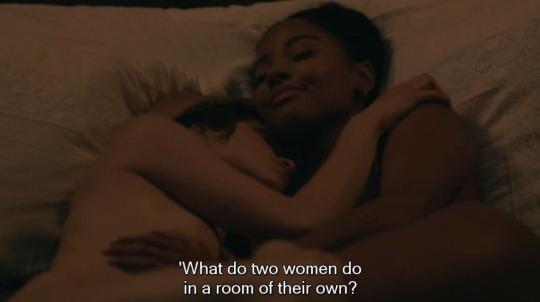



“We’re both women, after all.”
Mine (2021) / Nevertheless (2021) / P.S. I Hate You (2022) / The Confessions of Frannie Langton (2022) / GAP (2022-23) / Pluto (2024?) / Chaser Game W (2024)
#mine#nevertheless#ps i hate you#the confessions of frannie langton#gap the series#pluto the series#chaser game w#lesbian#sapphic#gl drama#web weave
57 notes
·
View notes
Text






J. S. Le Fanu's Carmilla (1872)
Hannibal, The Wrath of the Lamb, 03x13
#hannibal#hannibaledit#hannibal gifset#hannibal gif#carmilla#carmilla1872#hannibal parallels#web weaving#will graham#hannibal lecter#hannigram#mine#pluto gifs#pluto web weaves
309 notes
·
View notes
Text

Spiderman ID Pack
Requested by Anon
Names
Aaron, Abis, Achira, Ai, Aison, Apce, Arachne, Araignee, Aranea, Aranha, Arácnido, Benjamin, Boas/Boaz, Bruce, Bryce, Cancor, Charlie, Cooper, Dmitri, Einstein, Emer, Eugene, Ezekiel, Fleda, Gagamba, Gerald, Harold, Harry, Hobart, Hobie, Kansan, Kongulo, Kumo, Lawrence, Mac, MacDonald, Marc, Martha, Mattie, Max, Merimange, Mig-El, Miguel, Miles, Neptune, Norman, Ocho, Octavia, Otto, Patton, Pavitr, Peni, Peter, Piguel, Pluto, Pseter, Ragno, Salem, Scarlet, Screwball, Spidair, Spinner, Takuya, Taranto, Tarantula, Uttu, William, Wolf
Pronouns
arach/arachnid/arachnids, atom/atoms,fast/fasts, hazard/hazards, nuc/nuclear/nuclears, silk/silks, speed/speeds, spider/spiders, spin/spins, weave/weaves, web/webs, ☢️/☢️s, ☣️/☣️s, 🔆/🔆s, 🕷️/🕷️s, 🕸️/🕸️s
Titles
A Spider With a Heart of Gold, The One With A Spider-like Mask, The Spider-like Superhero, The Superhero of Webs, The Web Slinger, The Webbed Superhero, The Young Spider, [prn] Who Was Bit by a Spider
Genders
Acrossthespiderversecomfic, Ascpidergender, Autispidic, Lexespideric/Spiderlexic, Miles42charic, Milescharic, Multiversic, Phosuranium, Spiderbitch, Spiderinjection, Spiderloverboy, Spidermancharic, Spidermanlexic, Spiderthing, Spiderverseglitchgender, Spiderversekayic, Spiwebtanglen, Transmascspiderman
The entirety of the Genderspiderman gender system
Other mogai
Alderarachne, Alderarachnid, Araiperpesque, Assigned Spider At Birth/ASpiAB, Spidervesil
#id pack#npt suggestions#name suggestions#name list#name ideas#npt#title ideas#title suggestions#pronoun suggestions#pronoun list#gender list#gender suggestions#mogai list#mogai suggestions#mogai blog#mogai#spiderman#marvel#marvel spiderman#spiderman marvel#anon request
14 notes
·
View notes
Text
PV / Black Cat Felix AU
Masterpost 💜🐈⬛
In which Felix receives the Cat Miraculous, because Master Fu isn’t the sharpest tool in the shed.
Shenanigans ensue.
🎨 Art
Pluto’s design!
Well, it was nice while it lasted.
Guess who just got MURDERRREEEEED
Feligami February — Prompt 24: Double date
📝 Fics
La nuit, tous les chats sont gris
🪡 Web weaves
I’m on my vigilante shit again
#We love him your honour 💜🐈⬛#More will be added to this obviously#But I like having our stuff properly organised all in one place#miraculous ladybug#felix graham de vanily#pluto#black cat felix#mlb au#kwami swap#pv au#black cat felix au
7 notes
·
View notes
Text

if leoizu has a million fans, i'll be one of them. if leoizu has 10 fans, i'll be one of them. if leoizu only has 1 fan, it will be me. if leoizu doesn't have fans, then i'm not on this earth. if the world is against leoizu, i will be against the world.
haiiiii i am pluto/rin, i make graphics and web weavings
2 notes
·
View notes
Text
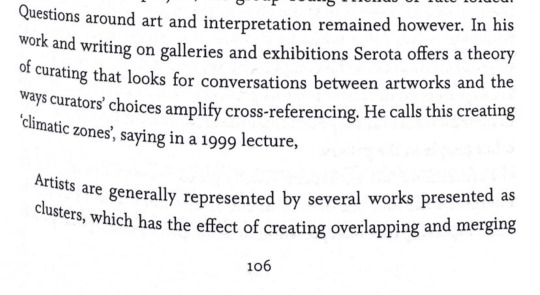


ok i'm sorry this pdf is so ugly but. this is why i love web weaving ( both making them, and as a form of posting )
Mel Evans, “The Impact of BP on Tate: An Unhappy Context for Art,” in Artwash: Big Oil and the Arts (London: Pluto Press, 2015)
#➤ ooc. ┊ she’s nauseous,she’s hysterical,and she’s exhausted.#it stimulates my brain in SUCH a good way. and it's curatorial. it's Serota's climatic zones ! to me!#like. not to take tumblr too seriously. but !!!!
3 notes
·
View notes
Text




The Moons of Pluto (2021)
András Cséfalvay & Lukáš Likavčan
Video 7:27 min
A collaborative work between visual artist András Cséfalvay and philosopher Lukáš Likavčan, The Moons of Pluto is an audiovisual commentary on the cosmological role of science. In the spirit of writer Sylvia Wynter, it recuperates the notion of the human as a storyteller and myth-maker as it surveys narratives about ancestrality and cosmic origins in the Western scientific-tradition, usually obscured by the modernist insistence on secular rationality. Elements of astronomy, physics, metaphysics and Earth-system sciences are enacted as planetological figures – the five moons of Pluto (Charon, Kerberos, Nyx, Styx, and Hydra) – whose stories weave together a web of associations that reflect on the cosmic background of the Western culture, and that of science as a discipline.
András Cséfalvay is a visual artist, digital storyteller, and mytho-poet from Bratislava, currently teaching at the Academy of Fine Arts in Bratislava. He studied painting and mathematics and wrote a dissertation on the usefulness and reality of fiction. He delves into the relationship between culture and technology and the political and ethical aspects of listening to non-dominant voices in world interpretation. His latest works look at the relationship between astronomers and indigenous peoples in constructing the Mauna Kea telescopes, the flight of dinosaurs as a technology for survival after extinction, and the reclassification of the planet Pluto. He is a receiver of the Oskar Čepan Young Visual Artist Price, a member of The New Centre for Research and Practice, and a co-founder of the Digital Arts Platform at the Academy of Fine Arts in Bratislava.
Lukáš Likavčan is a Global Perspective on Society Postdoctoral Fellow and research affiliate at the Center for AI & Culture at NYU Shanghai. His areas of expertise cover philosophy of technology and environmental philosophy. He is the author of Introduction to Comparative Planetology (Strelka Press, 2019). Previously, Likavčan studied philosophy at Masaryk University and obtained his Ph.D. in environmental studies. He also held visiting research positions at Wirtschaftsuniversität Wien and The Hong Kong Polytechnic University; faculty positions at Strelka Institute for Media, Architecture, and Design as well as the Center for Audiovisual Studies FAMU in Prague.
0 notes
Text
Celestial Chronicles: Navigating the Planets in Houses
The cosmos has long held a profound fascination for humanity, and throughout history, various cultures have sought to understand the celestial bodies and their influence on our lives. In the realm of astrology, the arrangement of planets in houses of the natal chart is a key factor in decoding the cosmic blueprint of an individual. In this exploration of "Celestial Chronicles," we delve into the intricate dance of planets within the astrological houses, unraveling the cosmic narrative written in the stars.
Unveiling the Cosmic Tapestry
Imagine the natal chart as a celestial map, each house representing a unique sector of life and each planet a celestial storyteller weaving its narrative across these domains. The first house, often associated with the self, personality, and appearance, serves as the stage where the cosmic drama unfolds. As planets take their positions in the various houses, they impart their distinct energies and influence on different aspects of an individual's life.
The Ascendant: Gateway to the Cosmos
At the helm of the astrological journey is the Ascendant, marking the beginning of the first house. This point on the ecliptic at the time of one's birth acts as the lens through which the individual perceives the world. The placement of planets in proximity to the Ascendant shapes the outer expression of the self and sets the tone for the cosmic symphony within.
Planetary Players: A Celestial Ensemble
Each planet is a character with its own traits and tendencies. The fiery Mars brings passion and drive, while the expansive Jupiter bestows growth and abundance. The mysterious allure of Pluto delves into transformation and rebirth, and the harmonious Venus graces relationships with beauty and love. As these planetary players move through the houses, they create a celestial tapestry, unique to each individual.
Houses as Cosmic Arenas
The twelve houses represent distinct arenas of life, from the personal and familial realms to career, spirituality, and beyond. Planets entering these houses cast their cosmic influence, shaping the narrative of one's journey. For example, a planet in the fourth house may illuminate themes related to home, roots, and family dynamics, while one in the seventh house could signify significant partnerships and relationships.
Navigating Celestial Transits
The ever-changing positions of planets in the houses create celestial transits, marking key periods of growth, challenge, and transformation. Understanding these transits provides insights into the ebb and flow of life's cosmic currents. Whether it be the intense energy of a Mars transit or the expansive possibilities of a Jupiter transit, these celestial events offer opportunities for self-discovery and evolution.
Astrological Synthesis: Blending Energies
An astrological analysis goes beyond individual planets and houses, exploring the intricate web of aspects and connections between them. Planetary aspects, such as conjunctions, squares, and trines, add layers of complexity to the cosmic narrative, revealing the interplay of energies that shape an individual's destiny.
Conclusion: Embracing the Celestial Symphony
"Celestial Chronicles: Navigating the Planets in Houses" invites us to embark on a journey through the cosmos within. It encourages us to decipher the celestial script that unfolds in the unique alignment of planets and houses in our natal charts. As we navigate the cosmic symphony, we gain a deeper understanding of ourselves, our relationships, and the profound connection between the microcosm of our lives and the vastness of the universe. In the dance of planets and houses, we find a celestial harmony that echoes the intricacies of our own existence.
GET FOR INFORMATION- Get Two Days Workshop on Predicting through Planet in Houses
0 notes
Text



criminal minds 7x01 “it takes a village” // richard siken
#pluto's brain rot#criminal minds#spencer reid#derek morgan#penelope garcia#emily prentiss#jennifer jareau#david rossi#aaron hotchner#pluto weaves webs#web weaving#userpenemily
45 notes
·
View notes
Text



NBC's Hannibal, The Wrath of the Lamb 3x13 / Poppy Z. Brite, Exquisite Corpse
"You are alone, because you are unique"
"I'm as alone as you are"
#i feel like will felt the former more (intimately invaded threatened)#and hannibal felt the latter more (fell to its knees and sobbed in gratitude that it was no longer alone)#which reflects their attitudes towards their ‘innermost fires’#hannibals embracing of his own and will’s suppression of his own#idk what im saying tho its been a minute and im rusty lol#nbc hannibal#hannibal lecter#hannibal#will graham#hannigram#hannibaledit#poppy z brite#exquisite corpse#pluto web weaves#the wrath of the lamb#hannibal 3x13
491 notes
·
View notes
Text



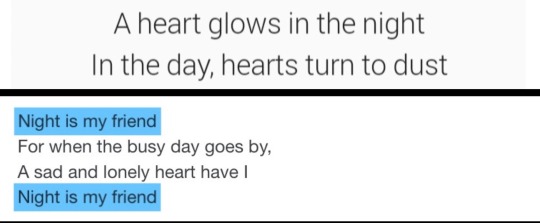



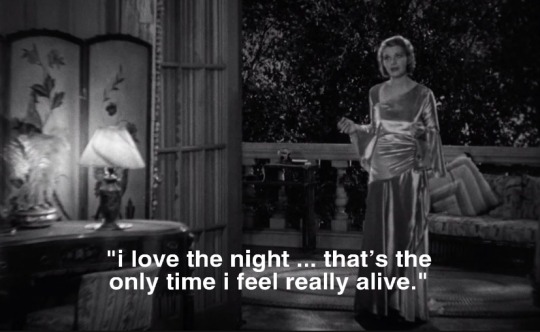


nighttime by megan hoagland / quiet light by the national / night windows by edward hopper / learn to trust by bad suns / night is my friend by molly drake / nic east / nighthawks by edward hopper / night light by unlike pluto / the nitrate diva / relentless / possession by sarah mclachlan / sleeping woman by raphael soyer
#omg emily made another web weaving post ://#so annoying🙄#it kind of matches my theme now :D#anyways#web weaving#parallels#words#lyrics#songs#poems#art#edward hopper#raphael soyer#the national#sarah mclachlan#bad suns#molly drake#unlike pluto#mine#solitude
722 notes
·
View notes
Text
TNO Watch: Eris
Helios on Eris– So, somehow in my accounting of the Transneptunians, I managed to overlook the biggest, most prolific of them all (however not the first to be discovered past Pluto!)- Eris! Now I can’t rightly finish off the archive without her, now can I? So without further ado, let me formally welcome back the most controversial dwarf planet back into the party!
Gird your loins, y’all
The Astronomy– Eris is the most massive and second-largest (by volume) dwarf planet (and plutoid) known in the Solar System. Eris was discovered in January 2005, and in September 2006 it was named after Eris, the Greek goddess of strife and discord. Eris is the ninth most massive object directly orbiting the Sun, and the 16th most massive overall, because seven moons are more massive than all known dwarf planets. It is also the largest which has not yet been visited by a spacecraft. Eris was measured to be 2,326 ± 12 kilometers (1,445.3 ± 7.5 mi) in diameter. Eris’s mass is about 0.27% of the Earth mass, about 27% more than dwarf planet Pluto, although Pluto is slightly larger by volume.
Eris is a trans-Neptunian object (TNO) and a member of a high-eccentricity population known as the scattered disk. It has one known moon, Dysnomia. As of February 2016, its distance from the Sun was 96.3 astronomical units (1.441×1010 km; 8.95×109 mi), roughly three times that of Pluto. With the exception of some long-period comets, until 2018 VG18 was discovered on December 17, 2018, Eris and Dysnomia were the most distant known natural objects in the Solar System.[
Because Eris appeared to be larger than Pluto, NASA initially described it as the Solar System’s tenth planet. This, along with the prospect of other objects of similar size being discovered in the future, motivated the International Astronomical Union (IAU) to define the term planet for the first time. Under the IAU definition approved on August 24, 2006, Eris is a “dwarf planet”, along with objects such as Pluto, Ceres, Haumea and Makemake thereby reducing the number of known planets in the Solar System to eight, the same as before Pluto’s discovery in 1930. Observations of a stellar occultation by Eris in 2010 showed that its diameter was 2,326 ± 12 kilometers (1,445.3 ± 7.5 mi), very slightly less than Pluto, which was measured by New Horizons in July 2015.
The Myth– Eris is the Greek goddess of strife and discord. The most famous tale of Eris recounts her initiating the Trojan War by causing the Judgement of Paris. The goddesses Hera, Athena and Aphrodite had been invited along with the rest of Olympus to the forced wedding of Peleus and Thetis, who would become the parents of Achilles, but Eris had been snubbed because of her troublemaking inclinations.
She, therefore (as mentioned at the Kypria according to Proclus as part of a plan hatched by Zeus and Themis) tossed into the party the Apple of Discord, a golden apple inscribed Ancient Greek: τῇ καλλίστῃ, “For the most beautiful one”, or “To the Fairest One” – provoking the goddesses to begin quarreling about the appropriate recipient. The hapless Paris, Prince of Troy, was appointed to select the fairest by Zeus. The goddesses stripped naked to try to win Paris’s decision and also attempted to bribe him. Hera offered political power; Athena promised infinite wisdom; and Aphrodite tempted him with the most beautiful woman in the world: Helen, wife of Menelaus of Sparta. While Greek culture placed a greater emphasis on prowess and power, Paris chose to award the apple to Aphrodite, thereby dooming his city, which was destroyed in the war that ensued.
Another story of Eris includes Hera and the love of Polytekhnos and Aedon. They claimed to love each other more than Hera and Zeus were in love. This angered Hera, so she sent Eris to wreak discord upon them. Polytekhnos was finishing off a chariot board, and Aedon a web she had been weaving. Eris said to them, “Whosoever finishes thine task last shall have to present the other with a female servant!” Aedon won. But Polytekhnos was not happy by his defeat, so he came to Khelidon, Aedon’s sister, and raped her. He then disguised her as a slave, presenting her to Aedon. When Aedon discovered this was indeed her sister, she chopped up Polytekhnos’s son and fed him to Polytekhnos. The gods were not pleased, so they turned them all into birds.
Eris has been adopted as the patron deity of the modern Discordian religion, which was begun in the late 1950s by Gregory Hill and Kerry Wendell Thornley under the pen names of “Malaclypse the Younger” and “Omar Khayyam Ravenhurst”. The Discordian version of Eris is considerably lighter in comparison to the rather malevolent Graeco-Roman original, wherein she is depicted as a positive (albeit mischievous) force of chaotic creation.
A quote from the Principia Discordia, the first holy book of Discordianism, attempts to clear up the matter:
One day Mal-2 consulted his Pineal Gland and asked Eris if She really created all of those terrible things. She told him that She had always liked the Old Greeks, but that they cannot be trusted with historical matters. “They were,” She added, “victims of indigestion, you know.”
Suffice it to say that Eris is not hateful or malicious. But she is mischievous and does get a little bitchy at times.
The story of Eris being snubbed and indirectly starting the Trojan War is recorded in the Principia and is referred to as the Original Snub. The Principia Discordia states that her parents may be as described in Greek legend, or that she may be the daughter of Void. She is the Goddess of Disorder and Being, whereas her sister Aneris (called the equivalent of Harmonia by the Mythics of Harmonia) is the goddess of Order and Non-Being. Their brother is Spirituality.
Discordian Eris is looked upon as a foil to the preoccupation of western philosophy in attempting to find order in the chaos of reality, in prescribing order to be synonymous with truth. Discordian Eris teaches us that the only truth is chaos and that order and disorder are simply temporary filters applied to the lenses through which we view the chaos. This is known as the Aneristic Illusion.
Why She Matters– Okay, its no secret that Eris is fantastic and I love her. Yes, Eris is chaos, but you know what? So is life. You can try and plan and make things nice and neat, but then the Universe comes through like a toddler who just learned how to walk, hellbent on getting to the other side of the room- consequences be damned. Eris is that universal action. Make no mistake, she is a destroyer and lives for the battlefield, but she also loves to dance, finding the beat in the deaths of men clamoring to prove that they are right to unseen forces (but most of all, themselves). If Mars ever did drag, she would look like Eris (and you bet your ass there would be death drops and shablams like you’ve never seen before!)
When people (read: hecklers) try to come at me with proof that astrology works (but who don’t have their birth time handy for me to utterly eviscerate them) I point to Eris. I remember when she was discovered, and the excitement that her unveiling brought to all of us. And then I remember, quite vividly, the fallout from the IAU decision after she was named but then relegated to dwarf planet status. It was a repeat of the Judgement of Paris myth! She was snubbed, yet again, by the authority, and Pluto was caught up in the fallout as collateral damage just because she was bigger than him (men and size issues, amirite?). And the authority paid for it in the end! Even total luddites who don’t follow the whirling and twirling of the planets (dwarf or otherwise) have a strong opinion about the decision. It made people care about these crazy space rocks, which brings me great happiness.
We aren’t all running around fighting all the time in this modern age, so how do we look at Eris now? A primal force of chaos doesn’t really mesh with our modern sensibilities- or does it? One of the more enlightening views on Eris comes when we consider her in terms of Justice, especially against any kind of oppressive authority. This can be seen in almost every major social movement to demand better treatment, to deny an oppressive ruling class its ability to exploit those below it- Stonewall, May Day, Ferguson, Rodney King, The Arab Spring…. Hell, even the Boston Tea Party! Eris is that urge we feel to stand our ground and refuse to roll over to the bad guys. Eris is the urge to fight for our rights. Yes, it can get violent- but better short violence that changes things for the better than the long, slow violence of inaction. Far better to live boldly and bravely.
More commonly though, Eris spurs us on to fight with our racist uncles on Facebook or send petty gifs in the group chats calling out our friends for being slutty… but like, in an endearing way. In fact you could solidly call Eris the Goddess of Shade. Hey, not every action can be a revolutionary one after all- sometimes you just want to get brunch with your girls.
Eris isnt just Chaos, by the way- she also represents Strife. More specifically, what you are striving for. What do you want out of this life? If you are lost, look to Eris and she can help you find your way when you’ve lost it. Mind you, you’ll be in for a HELL of a trip with her (more Thelma and Louise than Fear and Loathing in Las Vegas- That’s solidly Arawn territory) and you might not survive, but at least you’ll know!
Now, we all have all of these planets and asteroids SOMEWHERE in our chart, so in you is the seed of chaos- even the most holier-than-thou Libra. As with all of the Transneptunians, look at her house placement, not necessarily the sign, to see her effect.
To find out where she shows up in your chart, go to astro.com, put in your birth details and in the extended options, all the way at the bottom of the next page, there will be a menu of additional objects. Under that is a blank space where you can enter the number 136199, for Eris. Once you have it entered, generate the chart! Where does Eris affect your life? Let us know in the comments below!
Support us on Patreon so that we can keep delivering content like this! https://www.patreon.com/hereticaloracles
TNO Watch: Eris was originally published on Heretical Oracles
#asteroid astrology#eris#eris astrology#transneptunian astrology#Transneptunians#astrology#tarot#fuckstrology#bruja#brujeria
2 notes
·
View notes
Text





Hannibal, Dolce, 3x06
Wuthering Heights (1847), Emily Brontë
Poem Without a Hero & Selected Poems (1989), Anna Akhmatova
#very very slowly figuring out how to make gifs not look terrible on tumblr mobile#still not there yet though#if anyone has any advice id appreciate it :)#hannibal#hannibaledit#web weaving#wuthering heights#emily bronte#anna akhmatova#poetry#parallels#tvedit#hannibal gifs#hannibal gifset#hannigram#hannibal lecter#will graham#pluto gifs#pluto web weaves
171 notes
·
View notes
Text
Orphic Eudemian Theogony 2
Orphic Eudemian Theogony 2: Dionysus (c. 4th Century BC)
Orphic fragment 208 Kern: And Bacchus who is the last king of the Gods receives the kingdom from Jupiter. For the father establishes him in the royal throne, puts into his hand the sceptre, and makes him the king of all the mundane Gods: ‘Hear me ye Gods, I place over you a king.’ says Jupiter to the junior. {Retrieved from https://www.hellenicgods.org/orphic-fragment-208---otto-kern}.
Orphic fragment 34 Kern: For while [Dionysos was] still a child, and the Curetes danced around [his cradle] clashing their weapons, and the Titans having come upon them by stealth, and having beguiled him with childish toys, these very Titans tore him limb from limb when but a child, as the bard of this mystery, the Thracian Orpheus, says: ‘Cone, and spinning-top, and limb-moving rattles, And fair golden apples from the clear-toned Hesperides.’ … These are dice, ball, hoop, apples, top, looking-glass, tuft of wool. {Retrieved from https://www.hellenicgods.org/orphic-fragment-34---otto-kern}.
Orphic fragment 209 Kern: But he [Dionysos] did not hold the throne of Zeus for long, for with their round faces cleverly smeared with gypsum, at the instigation of wrathful bitter, acting in anger, the Tartarian Titans maimed him with a large knife, while he gazed at his cross-bred form reflected in the mirror. {Retrieved from https://www.hellenicgods.org/orphic-fragment-209---otto-kern}.
Orphic fragment 210 Kern: Into seven parts the Titans cut the boy [Dionysos]. {Retrieved from https://www.hellenicgods.org/orphic-fragment-210---otto-kern}.
Orphic fragment 35 Kern: The Titans who had torn him limb from limb, setting a caldron on a tripod, and throwing into it the members of Dionysos, first boiled them down, and then fixing them on spits, "held them over the fire." {Retrieved from https://www.hellenicgods.org/orphic-fragment-35---otto-kern}.
Orphic fragment 35 Kern: But Zeus having appeared, since he was a God, having speedily perceived the savor of the pieces of flesh that were being cooked,--that savor which your Gods agree to have assigned to them as their perquisite, assails the Titans with his thunderbolt, and consigns the members of Dionysos to his son Apollo to be interred. And he — for he did not disobey Zeus —bore the dismembered corpse to Parnassos, and there deposited it. {Retrieved from https://www.hellenicgods.org/orphic-fragment-35---otto-kern}.
Orphic fragment 35 Kern: Athene, to resume our account, having abstracted the heart of Dionysos, was called Pallas, from the vibrating of the heart; {Retrieved from https://www.hellenicgods.org/orphic-fragment-35---otto-kern}.
Orphic fragment 210 Kern: The intellectual heart [of Dionysos] alone remain'd. {Retrieved from https://www.hellenicgods.org/orphic-fragment-210---otto-kern}.
Orphic fragment 214 Kern: But not for long did the enemy’s triumph cause the shedding of tears, for Zeus, watching and seeing all, raised up Dionysos. {Retrieved from https://www.hellenicgods.org/orphic-fragment-214---otto-kern}.
Orphic fragment 220 Kern: Zeus, thus angered, struck them [the Titanes] with thunderbolts, and from out of the soot of the vapors rising up was produced the mud from which men are born. {Retrieved from https://www.hellenicgods.org/orphic-fragment-220---otto-kern}.
Orphic fragment 151 Kern: He does not require a Curetic guard, like … Proserpine [did for herself] {Retrieved from https://www.hellenicgods.org/orphic-fragment-151---otto-kern}.
Orphic fragment 192 Kern: While she [Kore] remained on high, weaving the order of celestials, was a nymph, as being undefiled; and in consequence of this connected with Jupiter, and abiding in her appropriate manners; but that proceeding from her proper habitation, she left her webs unfinished, was ravished (by Pluto), having been ravished was married, and being married generated, in order that she might animate things which have an adventitious life. For the unfinished state of her webs indicates I think, that the universe is imperfect or unfinished as far as to perpetual animals. {Retrieved from https://www.hellenicgods.org/orphic-fragment-192---otto-kern}.
Orphic fragment 197 Kern: [Kore] to be conjoined with Hades, and to beget the Furies. {Retrieved from https://www.hellenicgods.org/orphic-fragment-197---otto-kern}.
Orphic fragment 41 Kern: And at that time Demeter begot Hecate, daughter of a noble father [Zeus].’ {Retrieved from https://www.hellenicgods.org/orphic-fragment-41---otto-kern}.
0 notes
Text
Pluto Pt 3 - Ouch, Dammit
“Life’s catastrophic experiences and the evil aspects of human nature weave together to produce a complex Plutonian whole. Where Pluto lies in the birth chart, we will be confronted with those difficult truths. And when Pluto passes through sensitive zones of the chart, they will rise up in our hearts and in our circumstances.” - Steven Forrest, The Book of Pluto, p. 3 (2nd Edition, 2012)
Indeed. Back in 2001, Pluto transitioning into my 2nd House coincided with my then-husband being fired (as an indirect consequence of 9/11), his subsequent refusal to find another job, and the financial effect it had on our family. And as I mentioned previously, Pluto moving from my 2nd to my 3rd House commenced with the deaths of two of my six siblings, eleven months apart to the day.
On a global scale: Pluto transitioned from Sagittarius to Capricorn in 2008. The US presidential election that year is obviously one of the headline events, but - there’s always a “but” - this year was also the beginning of the global Great Recession. And keep in mind that the majority of people in the US hadn’t yet recovered from the post-9/11 recession.
It isn’t fashionable to criticize the US between 2008-2016, especially in light of the catastrophic evil that followed. Nevertheless, it’s interesting to realize how low the status quo has become. One-sixth of all US households with children in 2016, for example, live in what is called food insecurity - “these households were uncertain of having, or unable to acquire, enough food to meet the needs of all their members because they had insufficient money or other resources for food,” per the USDA web site. How is this possible in “the greatest country in the world”?
And health insurance. People in the US (raises hand) have to set up GoFundMe pages to cover health care costs.
It’s easy to see the overall global tendency to “austerity” as a factor of Pluto/Capricorn. The oligarchs are gaining power (or being unmasked), and it’s “austerity” for the rest of us. (If current trends continue, my theory about Pluto/Aquarius is that robotics will become much more prevalent. After all, robots don’t call in sick or ask for a raise.)
Just lately, we’ve also seen light shone on the uglier side of the patriarchy, “thanks” to the exposure (Pluto!) of sexual predators in positions of power (Capricorn). I think Juno’s presence in Capricorn, conjunct Pluto, has been a factor in the exposure of that particular ugly underbelly. My hope is that people will begin to realize how racism and sexism, xenophobia, homophobia - ALL OF IT - is intrinsic to capitalism and patriarchy; and to take steps accordingly.
Something I have not seen written or talked about, is that at this particular juncture of time/space, transiting Pluto is travelling over the exact degrees of 1993’s Uranus-Neptune conjunctions. The whole cycle of Globalization has a couple of important prongs - the internet, and biotechnology. (Here’s a really amazing read about this.) Pluto going over these points shows that those two topics are undergoing an overhaul. With the internet in particular we��re faced with issues of privacy (Pluto) and government control (Capricorn).
I hear your plaintive cries of, “What’s all that got to do with little old me?” There are plenty of cliches I can call upon to answer that:
“As above, so below”
“Think globally, act locally”
“If you’re not part of the solution, you’re part of the problem”
Structure is important in our lives. The ruler of Capricorn, Saturn, has an astrological association with our skeleton and our skin - no one, I hope, would argue that skin and bones aren’t necessary! Pluto going through Capricorn, then, can be seen as some remedial surgery and physical therapy to the current structures. Where Pluto is transiting in your chart shows where these worldly goings-on affect you personally.
Remember, too, that Plutonian activity via transit is based on its natal position. That is: its place in your natal chart is the cause; where it transits is the action taken (or not) in response to that cause; the Scorpio house(s) arenas are where the results show up.
17 notes
·
View notes